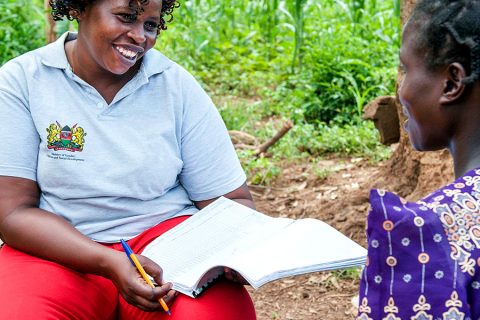
AMREF Nutrition Mapping and Integration Project: A Nutrition Leverage & Influence for Transformation (NLIFT) collaboration
Our Goal
To contribute to improved health and nutrition among women, children and adolescent girls in Africa.
Our Locations
- Kenya
- Senegal
- South Sudan
- Malawi
- Zambia
- South Africa
- Ethiopia
- Tanzania
- Uganda
Donor
Nutrition International through the financial assistance of the Government of Canada – Global Affairs Canada
Collaborating Partners
- The Amref countries Ministry of Health (MOH), Ministry of Education, Ministry of Agriculture, Ministry/Department of water and sanitation and Amref Country Offices.
Project Duration
2 Years
Background
Amref Health Africa (Amref) reaches over 10 million people in more than 30 countries across the continent. It reaches vulnerable populations with community-based health interventions, water and sanitation services, and disease prevention services, but frequently, nutrition interventions are not included in these services.
On the demand and service delivery side, target populations that are being missed, or are not receiving optimal nutrition services, include infants and young children, adolescents, and mothers. While on the supply side, Amref is training health workers at all levels – national, pre-service, in-service and community-based – but nutrition content in many cases is absent.
In addition, Amref is a strong advocate for health; but lack or have minimal internal capacity to advocate for improved nutrition services through their health programs. The N-LIFT investment will address these gaps through the guidance of a seconded senior Nutrition Technical Advisor (NTA) from NI.
Specific Objectives
- Systematic integration of nutrition in Amref Health Africa programs and countries
- Improved access to quantity, quality and timeliness of the provision of nutrition interventions to Amref health Africa target groups- adolescent girls, Women of Reproductive Age and children based on gaps identified during the mapping exercise
- Increased demand/uptake of nutrition interventions by adolescent girls, Women of Reproductive Age and children in communities based on gaps identified during the mapping exercise
Major activities/Intervention Areas
The first phase of the project has three major activities:
- Conducting a comprehensive nutrition mapping across Amref programs;
- Conducting a capacity assessment of Amref’ s staff current knowledge in nutrition at all levels and
- Developing an organizational nutrition strategy for successful nutrition integration and aligning it to the Amref global strategy 2018 -2022.
Achievements to date by Objective Areas
The achievement of the first phase of the project include:
Nutrition mapping exercise conducted and finalised in 5 of the 9 Amref Health Africa Country offices (Tanzania, Senegal, Uganda, South Sudan and Kenya). The mapping exercise have identified 37 projects (3-Senegal, 4-Tanzania, 5-Uganda, 3-South Sudan and 22-Kenya) as projects that have potential for integrating nutrition interventions. The initial three page reports prepared for the first four countries are being revised into more comprehensive (30-40 page) reports using a format provided by the TAG during September 26, 2018 meeting. The understanding of TAG being that the three page reports missed out critical information. Revised reports for Tanzania and Senegal are done, whereas Uganda is almost complete. The South Sudan and Kenya reports are works in progress.
Knowledge and capacity assessment on essential nutrition actions for Amref Health Africa field staff and senior managers carried out in 5 out of 9 Amref country offices (Tanzania, Senegal, Uganda, South Sudan and Kenya) to identify nutrition capacity needs and gaps. A total of 82 field staff were assessed in the four countries (16-Tanzania, 11-Senegal, 11-Uganda, 8-South Sudan and 36-Kenya. The results have been integrated in the country reports.
2 out of 3 Amref platforms have been assessed to identify the levels of nutrition integration (preliminary; deeper assessment needed). The initial results show some nutrition content gap that has to be addressed once the upcoming comprehensive mapping for the platforms is completed.

